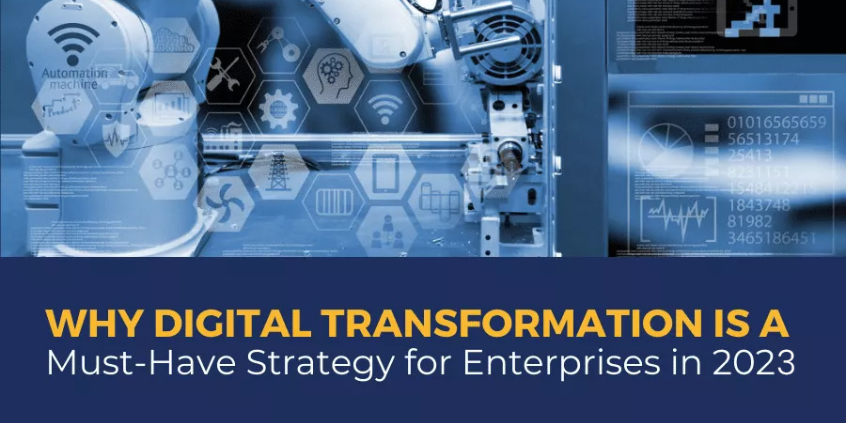Industry 4.0 and Digital Transformation in enterprise has literally disrupted traditional industrial processes as we know it. Asset-intensive industries such as Manufacturing, Oil & Gas, Chemical, Automobile, etc. They have started adopting digital transformation technology to stay ahead of the curve and get a competitive advantage.
Technologies like AR, Remote asset monitoring, Connected Assets, Industrial IoT have been introduced & integrated with beacons and sensors to automate processes, gather data, and analyze them. This has empowered organizations to make decisions based on intelligent insights.
However, not all digital transformation strategies that were adopted by enterprises have been successful. While the success that digital transformation solutions can bring to business processes or factory processes is astounding, it can only be achieved if the execution has been well planned by key stakeholders.
The vision of Industry 4.0 may be the need of the hour but the questions that businesses most importantly need to ask themselves are, Are we Ready? Do we have the time and space to accept these changes? What is the financial impact that it will have and how soon will we see returns?
Here are 5 critical factors that we suggest organizations should keep in mind while driving a digital transformation strategy across the organization.
1. Aligning Business Goals With Digital Transformation
The very first step that any enterprise should do, is to understand what the current business goals are. What objective are they trying to achieve by bringing about a digital transformation? Key leaders must understand if bringing about change adds value to the current business processes. They also need to analyze the scale of change. If the current business processes are outdated & do not keep up with industry standards, then they might need to go through a big change.
However, if they are trying to reduce operational costs for current processes and assets probably a remote asset monitoring system or a remote assistance system should suffice. In this case, Bringing about a change to all the processes may be time-consuming, expensive, and may do a lot more damage than good.
Many business owners stop at the cost-benefit analysis of bringing about digital transformation. They don’t move beyond the point feeling that the payback period is too long.
However, expert digital transformation partners usually advise creating a roadmap and marking each milestone with the outcomes that are expected. In doing so, the payback period seems very short. Industry leaders who have successfully implemented industry 4.0 solutions have reported a payback period as low as 4 weeks.
2. Phase-out the Digital Transformation Journey
Digital transformation cannot be achieved overnight or in a day’s time. Depending on the scale and complexity of implementation, it can range from weeks to almost a year. Hence it is very important to execute it in a phased manner. Especially in organizations where traditional processes are penetrated deep into the systems, it will be difficult to automate those parts.
3. Involve all Key Stakeholders
Before an enterprise undergoes a digital transformation, it is imperative that all key stakeholders i.e. employees and C-suite executives are aligned with this decision. Industry leaders who have engaged and involved top leaderships like CIO or CDO’s in this decision have seen 1.6 times more success than those who don’t.
In addition to this, a lot of employees may be resistant to adopt digital transformation in enterprise technologies for the fear that it might replace their jobs.
It is absolutely necessary to educate and bring all employees on board so that they can embrace this change willingly & feel more secure about it. In case these technologies are overtaking some of their roles, enterprises need to sit down and redefine expectations and give them role clarity as well as expected outcomes of it post-integration.
4. Agile and Lean approach
Agile and Lean project management methodologies allow managers to convert work into more manageable. As a result, more value is often added and waste are often eliminated at different steps of transformation. This is often a strong combination for handling something as big as digital transformation. Agile methodology can ensure company-wide process and methodological alignment.
Concluding Lines
While the vision of industry 4.0 & execution of digital transformation strategy can be a daunting task. Keep these simple steps in mind will see to a hassle-free and seamless execution ensuring the success of an enterprise.
At Rejig Digital, we offer several digital transformation solutions that integrate emerging technologies like AR, IoT, machine learning, & Artificial Intelligence. We specialize in seamless execution of it across big and small businesses, thereby ensuring the success of your business.




